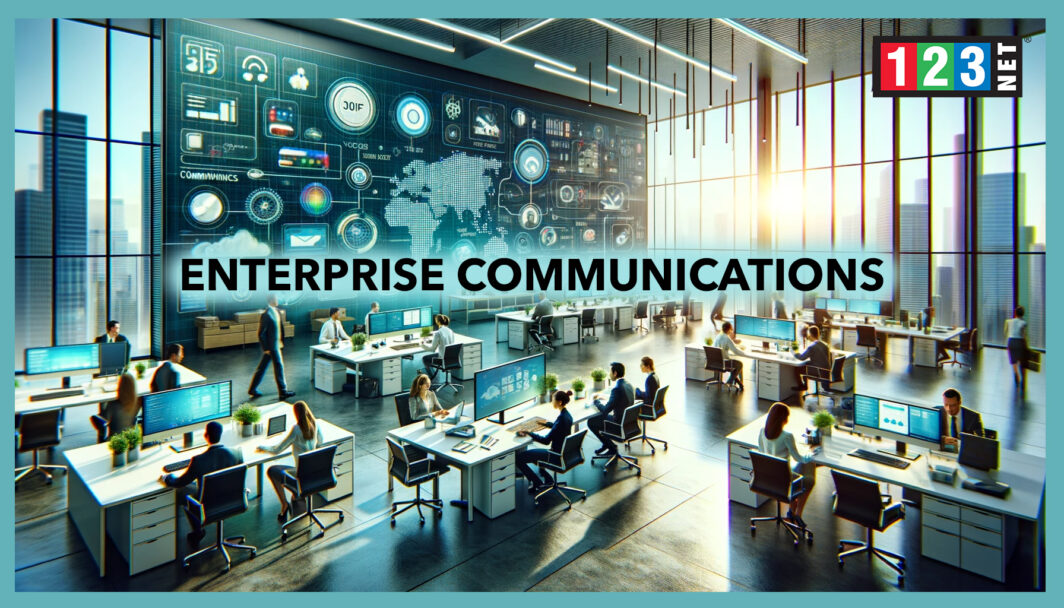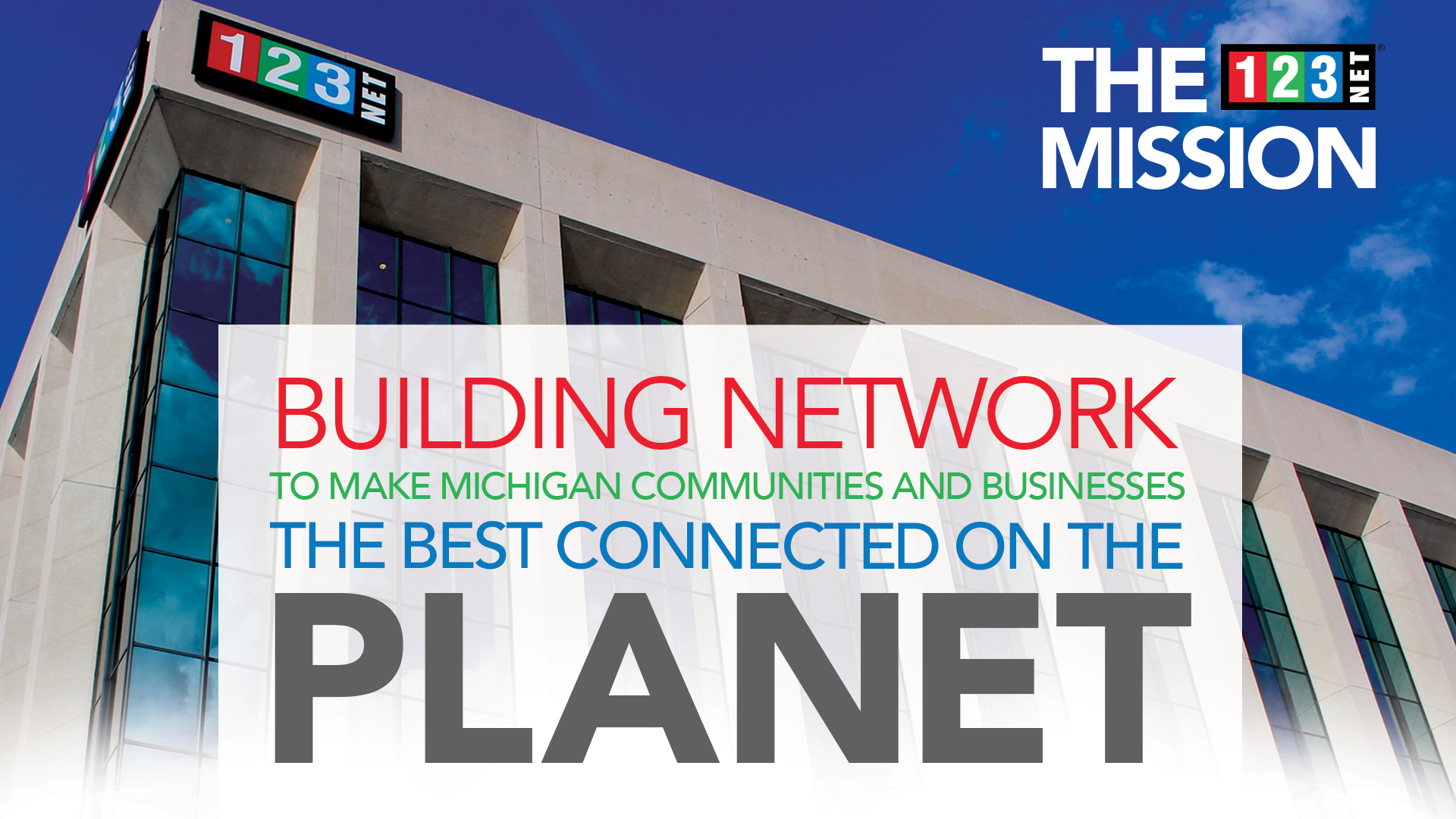
Introduction
In today’s digital age, the ability to communicate effectively has transcended traditional boundaries, emerging as the cornerstone of business success across the globe. At the heart of this transformation lies Enterprise Communications, a multifaceted domain that integrates a wide array of technologies, platforms, and practices. These components work in concert to enable seamless interaction not just within the confines of an organization but also with the broader external ecosystem comprising customers, partners, and other stakeholders. As the business landscape continues to evolve, becoming more dynamic and increasingly interconnected, the role of sophisticated, secure, and efficient communication systems has become more critical than ever.
The advent of digital transformation has propelled Enterprise Communications to the forefront of organizational priorities, necessitating a shift from conventional methods to more advanced, integrated solutions. This transition is not merely a matter of adopting new technologies but represents a fundamental change in how businesses operate, collaborate, and engage with their environment. The global marketplace, characterized by its relentless pace and competitive intensity, demands that enterprises not only adapt to these changes but also anticipate and shape future communication trends.
This guide aims to navigate the complex terrain of Enterprise Communications, offering insights into its essential components—from traditional telephony to cutting-edge unified communications platforms that blend voice, video, instant messaging, and collaboration tools. We will explore the tangible benefits that a robust communication framework brings to an organization, including enhanced operational efficiency, improved collaboration, and a stronger competitive edge
Evolution of Enterprise Communications
The evolution of Enterprise Communications is a testament to the remarkable journey of technological innovation and adaptation within the business world. In its early days, the landscape was predominantly ruled by on-premises Private Branch Exchange (PBX) systems and analog fax machines—tools that, while revolutionary at the time, tethered communication to physical locations and hardware. These traditional telephony systems, characterized by their reliability and simplicity, formed the backbone of business communications for decades. However, as the digital era dawned, it became increasingly clear that these legacy systems, with their inherent limitations in flexibility and scalability, were ill-suited to meet the demands of a rapidly evolving business landscape.
The advent of the internet and digital technologies heralded a new era for Enterprise Communications. The sector began to shift dramatically towards more advanced, internet-based solutions, marking the beginning of a paradigm shift that would redefine the essence of business communication. Voice over Internet Protocol (VoIP), a technology that allows voice to be transmitted over the internet rather than traditional telephone lines, emerged as a game-changer. VoIP offered businesses a glimpse into a future where communication was not only cheaper but also more versatile, breaking down geographical barriers and paving the way for global connectivity.
Key Components
Voice and Video Communications: At the core of Enterprise Communications are voice and video solutions. VoIP technology has revolutionized voice communications by transmitting calls over the internet, reducing costs, and enhancing connectivity. Video conferencing has become indispensable, especially with the rise of the remote workforce, allowing face-to-face interactions without geographical constraints.
Unified Messaging and Collaboration Tools: Unified Communications (UC) integrates various communication methods within a business. It combines email, voice mail, instant messaging, and video conferencing into a single interface, improving efficiency and collaboration. Collaboration tools, such as Microsoft Teams or Slack, further enhance productivity by enabling real-time document sharing and communication among team members.
Cloud-based Communication Services: Cloud communications offer flexibility and scalability, allowing businesses to adjust their communication capabilities as needed. This model supports a range of services, from cloud-hosted VoIP to fully integrated UC platforms, facilitating remote work and reducing the need for extensive on-premises infrastructure.
Security and Compliance in Communications: With the increasing reliance on digital communication tools, network security and data encryption have become paramount. Businesses must ensure their communication platforms are secure, compliant with regulations, and capable of protecting sensitive information against cyber threats.
Benefits
Effective Enterprise Communications
Serve as the backbone of modern organizational success, playing a pivotal role in streamlining internal processes, enhancing collaboration, and facilitating improved decision-making. This trifecta of benefits drives a significant uptick in productivity and operational efficiency, marking a departure from traditional, compartmentalized approaches to business communication. By dismantling the silos that often hinder cross-departmental collaboration, these advanced communication strategies foster a more integrated and cohesive work environment. This integration is not merely about improving workflow efficiencies; it’s about creating a fertile ground for innovation and agility, where ideas can flow freely and teams can pivot quickly in response to market demands.
Robust communication tools
has been particularly transformative for the remote workforce. In an era where remote work has transitioned from a temporary solution to a permanent fixture for many organizations, the ability to communicate effectively across distances is paramount. These tools ensure that geographical separation does not equate to operational disconnect. Video conferencing, real-time messaging, and collaborative digital workspaces have bridged the gap between physical office spaces and remote work environments, enabling seamless collaboration. This level of connectivity allows businesses to tap into global talent pools without the constraints of location, opening up a world of possibilities for diversity, innovation, and skill acquisition.
Business’s Operational Continuity
in the face of challenges—be they economic downturns, global pandemics, or natural disasters—hinges significantly on its communication infrastructure. Effective Enterprise Communications ensure that teams remain aligned, informed, and responsive, regardless of external pressures. This resilience is critical not just for maintaining day-to-day operations but also for ensuring long-term strategic goals are not derailed by unforeseen events.
In addition to facilitating operational continuity, these communication strategies play a crucial role in employee engagement and satisfaction. A well-connected workforce is a more engaged workforce. When employees feel connected to their peers, managers, and the broader organizational mission, their motivation and job satisfaction levels tend to be higher. This sense of belonging and engagement is especially important for remote employees, who might otherwise feel isolated from the company culture and disconnected from their teams.
Challenges in Enterprise Communications
Integrating new communication technologies into existing systems is a complex endeavor that necessitates meticulous planning and strategic execution. It involves not only the technical aspects of integration but these new technologies with the organization’s existing workflows. The goal is to enhance communication capabilities without disrupting ongoing operations, a balance that is critical yet difficult to achieve. Successful integration requires a comprehensive understanding of both the current infrastructure and the capabilities of the new technologies. It often demands significant customization and configuration to ensure compatibility and to optimize functionality within the existing ecosystem.
Security and privacy in communications have become paramount concerns, especially given the increasing sophistication of cyber threats. The digital nature of modern communication tools, also opens up new vulnerabilities that can be exploited by malicious actors. Protecting sensitive information and maintaining the confidentiality of communications require a proactive approach to security. This involves the implementation of robust network security measures, such as firewalls, intrusion detection systems, and secure access protocols. Data encryption is safeguarding information as it travels across networks, ensuring that even if data is intercepted. Organizations must stay ahead of the latest security trends and threats, continuously updating their defenses.
Future Trends in Enterprise Communications
Artificial Intelligence (AI)
AI in communications is set to redefine the way businesses interact both internally and with their customers. Intelligent automation, powered by AI, is streamlining complex communication processes, reducing manual effort, and increasing efficiency. This extends to sorting and responding to emails, managing schedules, and even optimizing network operations. Enhanced customer service is another significant area where AI is making its mark. Chatbots and virtual assistants, equipped with natural language processing capabilities, are providing instant, round-the-clock support to customers. They can handle a multitude of queries, offer personalized responses, and escalate issues to human representatives when necessary. This not only improves customer satisfaction but also allows human resources to focus on more complex tasks.
Predictive analytics
Another powerful tool emerging from the convergence of AI and communications. By analyzing vast amounts of data, businesses can anticipate customer needs, forecast market trends, and make informed strategic decisions. This predictive capability is particularly valuable in tailoring marketing efforts, optimizing supply chains, and enhancing product development.
5G technology
Promising unprecedented speed and reliability, 5G will enable more robust mobile communication, supporting a growing remote and mobile workforce. Its low latency and high bandwidth capabilities that can support advanced applications like augmented reality (AR) and virtual reality (VR). Furthermore, 5G is expected to accelerate the proliferation of IoT (Internet of Things) devices in the enterprise space. Businesses can gather more data, gain deeper insights, and automate more processes, leading to increased operational efficiency.
Best Practices for Implementing Enterprise Communications
Choosing the right communication platform for your business is a critical decision that can have far-reaching implications for your organization. This process begins with a thorough assessment of your business’s specific needs. Scalability is a key consideration; the chosen platform must be able to grow and adapt as your business expands. This means not only being able to handle an increasing volume of communication but also integrating new features and technologies.
Security is another paramount concern. With the rise in cyber threats, it’s essential that the communication platform has robust security measures in place. This includes end-to-end encryption, secure data storage, and regular security updates to protect against new vulnerabilities. Additionally, compliance with industry standards and regulations, is crucial to avoid legal repercussions and maintain customer trust.
Once a platform is selected, training and ongoing support for users become essential for ensuring smooth adoption. Employees need to be comfortable and proficient with the new tools to fully leverage their capabilities. This involves structured training sessions, easy-to-access online resources, and a responsive IT support team to address any issues that arise. Effective training not only facilitates a smoother transition but also helps in maximizing the return on investment.
Case Studies: Success Stories in Enterprise Communications
Global Retail Chain
This organization adopted a unified communications platform to interconnect its stores across the world. This integration facilitated seamless communication between the headquarters and individual stores, as well as among the stores themselves. As a result, the company saw a marked improvement in its inventory management processes. The retail chain was able to optimize stock levels, reduce instances of overstocking or stockouts, and respond more swiftly. Additionally, the enhanced communication capabilities led to a notable improvement in customer service. Store employees were able to quickly access information and resources and respond to customer inquiries more effectively.
Remote Workforce
Another compelling example is that of a tech startup that embraced cloud communications to support its burgeoning remote workforce. In an era where remote work is becoming increasingly prevalent, this move proved to be particularly advantageous. The cloud-based communication system allowed team members to collaborate effectively, fostering a sense of unity and teamwork. This setup not only led to increased productivity, but also resulted in significant cost savings. By reducing the need for physical office space, the startup was able to allocate resources more strategically.
These examples underscore the transformative impact of Enterprise Communications. By adopting these advanced communication technologies, business will improve their interactions with customers. The benefits encompass better customer engagement, more agile response to market changes, and a stronger competitive position in the industry. As the landscape of business communication continues to evolve, more companies are likely to recognize the value of these technologies.
FAQs on Enterprise Communications
What are the main components? A: The main components include VoIP, unified messaging, collaboration tools, cloud communications, and security measures.
How does it improve productivity? A: By facilitating seamless collaboration and information sharing, reducing response times, and supporting remote work.
What are the security considerations? A: Businesses need to prioritize network security, data encryption, and regulatory compliance.
In conclusion, Enterprise Communications is enabling organizations to navigate the complexities of today’s global market. By understanding and leveraging the latest technologies and trends, businesses can achieve greater efficiency, security, and competitive advantage




